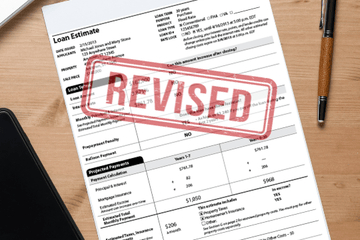TRID: Auditing the LE & CD for Compliance
On-Demand Webinar:
StreamedMar 6, 2025Duration90 minutes
- Unlimited & shareable access starting two business days after live stream
- Available on desktop, mobile & tablet devices 24/7
- Take-away toolkit
- Ability to download webinar video
- Presenter's contact info for questions
This detailed session will dive into what auditors must know for TRID compliance.
Many tools will be provided to
aid in completing a TRID audit, including tips on calculating TRID-sensitive
dates, examples to ensure proper selection of the loan’s purpose, formulas to
verify calculations, and a list of common costs and their appropriate placement
within the Loan Costs table. Join us to learn more about this challenging topic.
AFTER THIS
WEBINAR YOU’LL BE ABLE TO:
- Audit for timing requirements
- Determine if disclosures were issued in good faith
- Identify if a valid changed circumstance occurred
- Verify critical numbers using the FFIEC tool
- Review completed TRID documents for accuracy
WEBINAR DETAILS
TRID continues to be a challenging regulation, and it is critical that your
institution has implemented tools to regularly audit the Loan Estimate (LE) and
Closing Disclosure (CD) for accuracy. Join us as we review critical TRID
components, including document delivery timing requirements, determining if the
good faith standard was achieved, and identifying if a valid changed
circumstance was encountered and supported by file documentation. This program
will include an explanation of how to utilize the FFIEC’s disclosure
computational tool to test the accuracy of the annual percentage rate and
finance charges. In addition, it will provide guides to assist auditors with LE
and CD regulatory citations.
WHO SHOULD ATTEND?
This informative session
is designed for those responsible for TRID compliance, including mortgage
lenders, real estate lenders, loan closers, loan processors, compliance staff,
risk professionals, and audit personnel.
TAKE-AWAY TOOLKIT
- TRID calculation formulas
- Examples of purpose types defined by Regulations C and Z
- Changed circumstances worksheet
- Tolerance chart identified by fee category
- Sample loan cost comparison worksheet
- Employee training log
- Interactive quiz
- PDF of slides and speaker’s contact info for follow-up questions
- Attendance certificate provided to self-report CE credits
NOTE: All materials are subject to copyright. Transmission, retransmission,
or republishing of any webinar to other institutions or those not employed by
your institution is prohibited. Print materials may be copied for eligible
participants only.
Presented By

Brode Consulting Services, Inc.
Other Webinars That Might Interest You

Collection Series: Collecting & Communicating with Troubled Borrowers Before It's Too Late
by David A. Reed

TRID Basics for Lenders & Processors
by Dawn Kincaid

Are Overdraft Programs OK Again?
by Carl Pry

BSA Exam Manual Series: History, Risk Assessments, Training, Audits, Internal Controls & BSA Officers
by Deborah L. Crawford

AI Series: Advanced AI Risk Management: Validation, Governance & Emerging Risks
by Dushyant Sengar

Accounting Foundations for Lenders
by Jeffery W. Johnson

Using Data to Enhance Accountholder Relationships
by Tim Dively

TRID: Changed Circumstances & Revised Loan Estimates
by Molly Stull

PCI Credit Card Security Risk, Readiness & Compliance for Financial Institutions
by Randall J. Romes

ACH Specialist Series: Liability with ACH Death Notification Entries (DNEs) & Reclamations
by Michele L. Barlow
© 2025 FINANCIAL EDUCATION & DEVELOPMENT, INC


